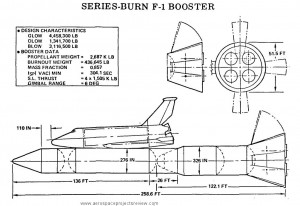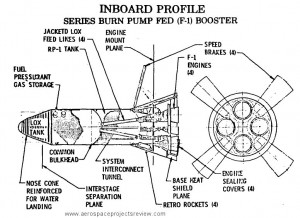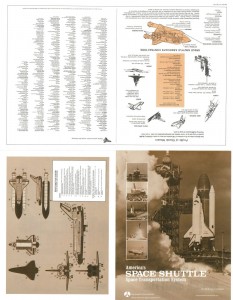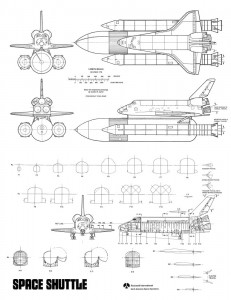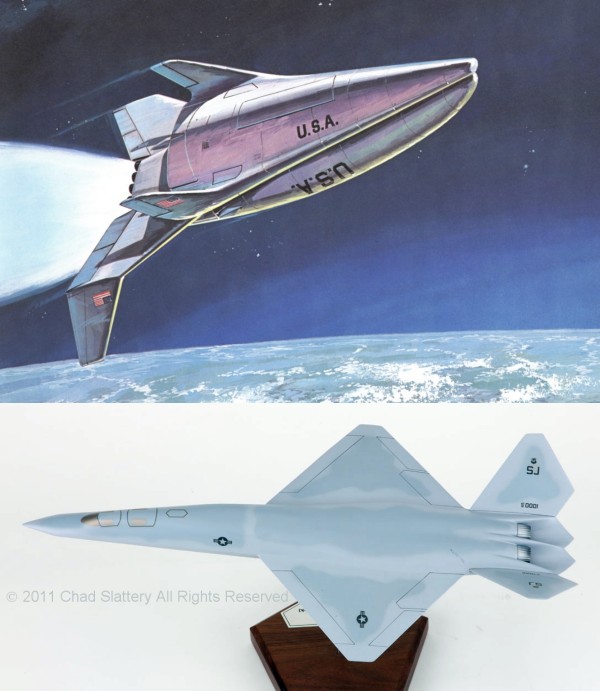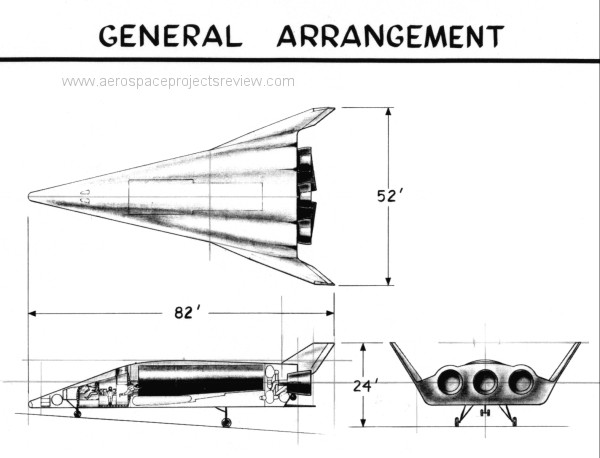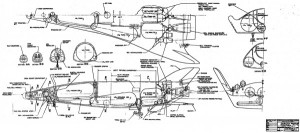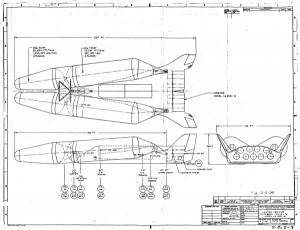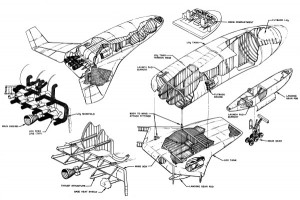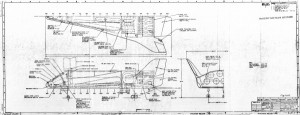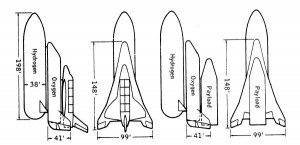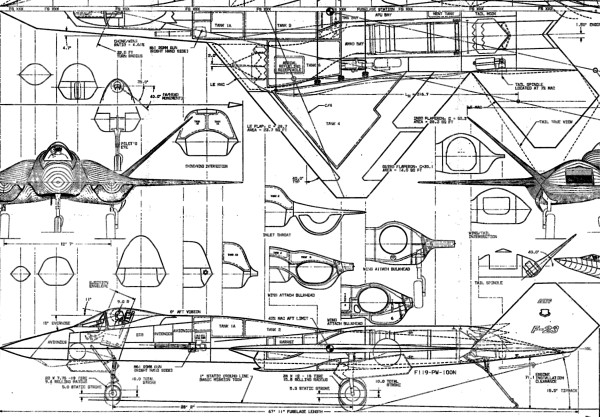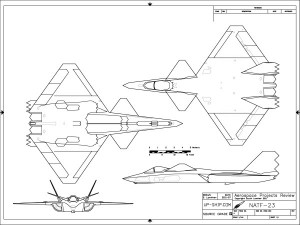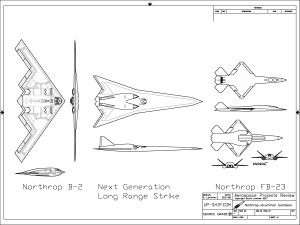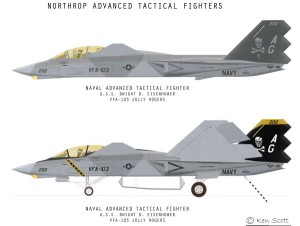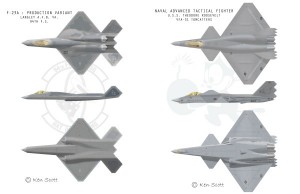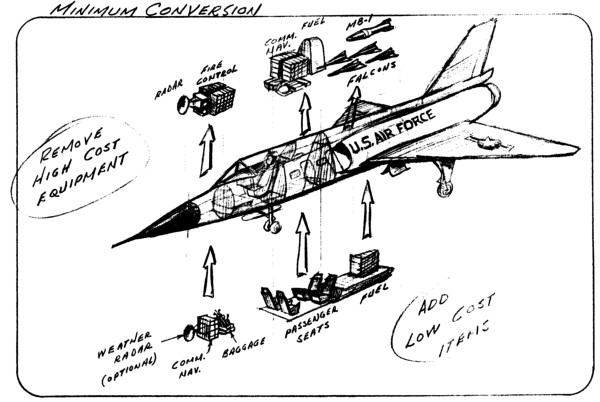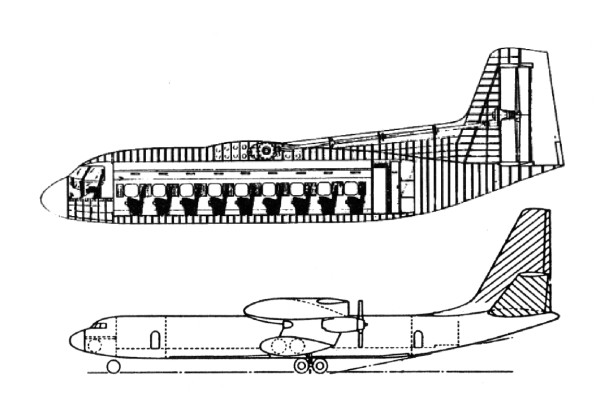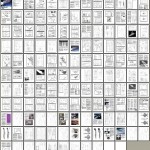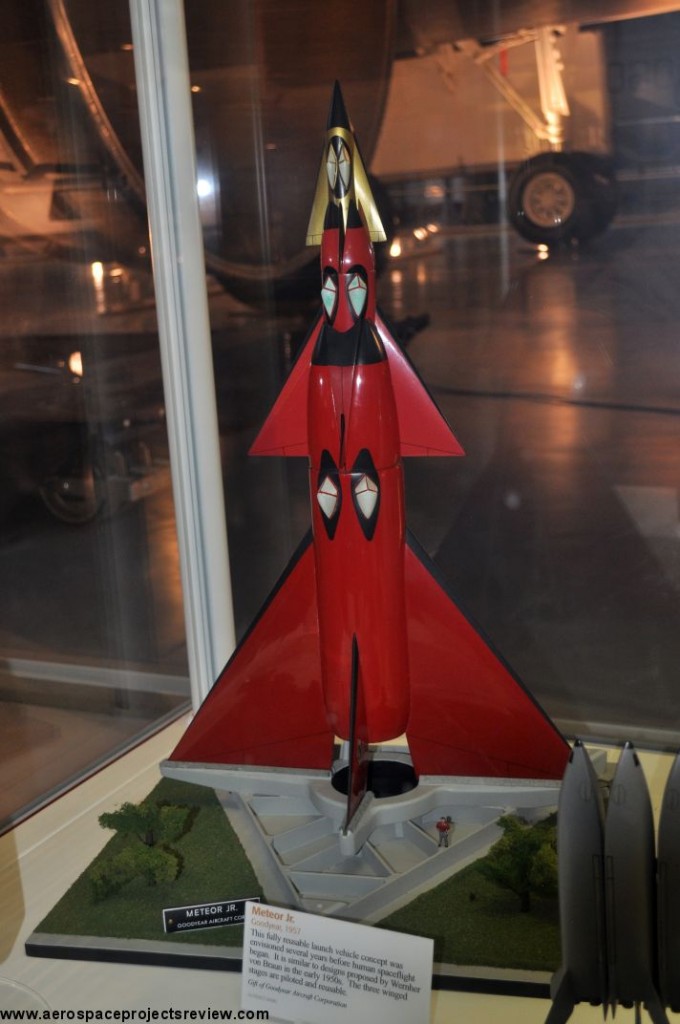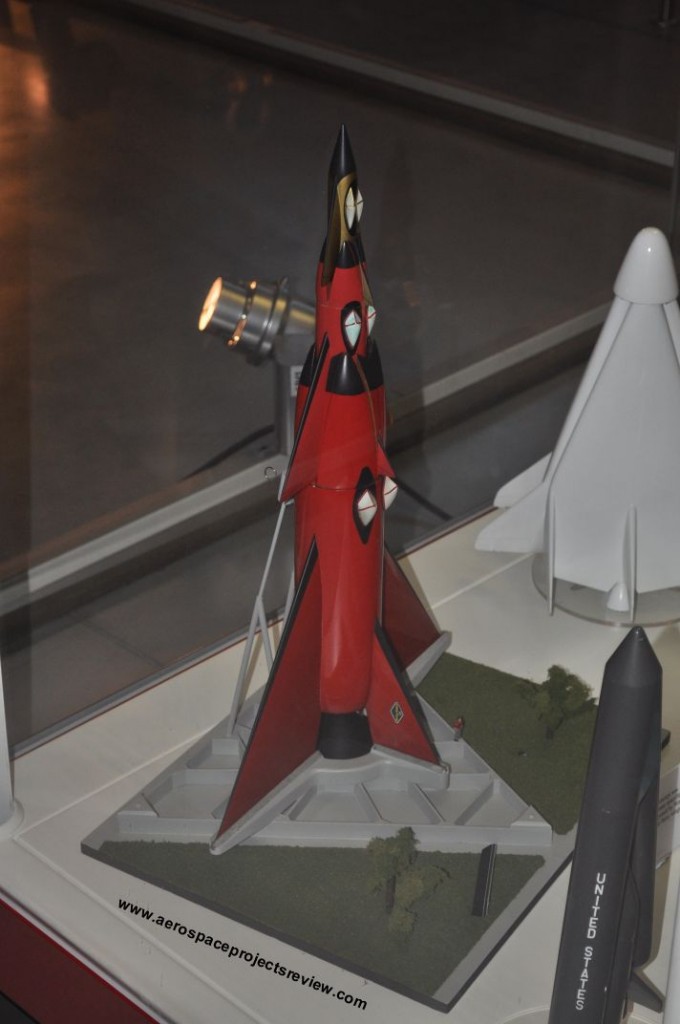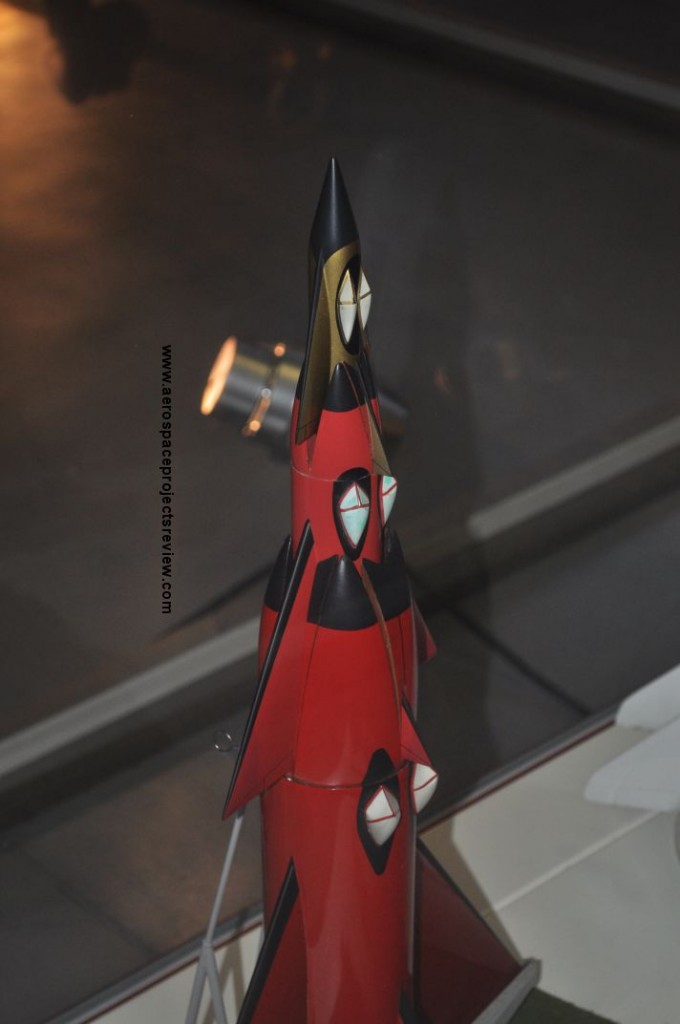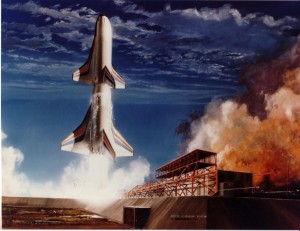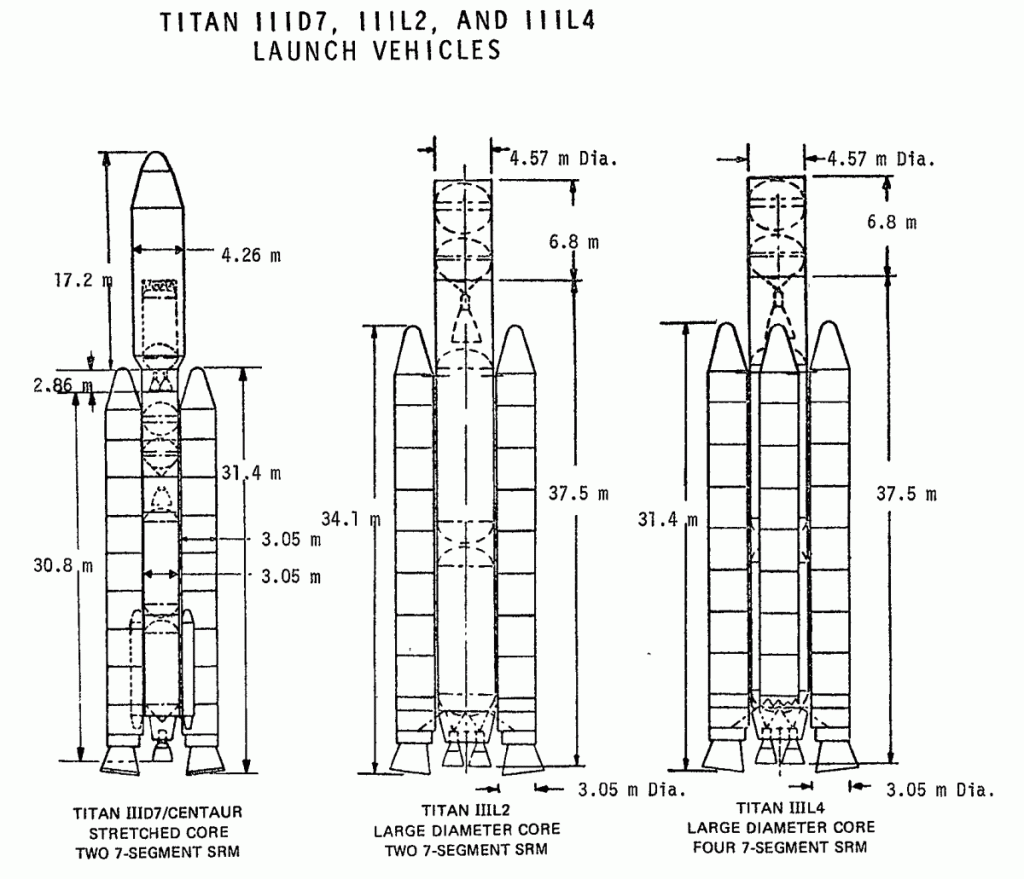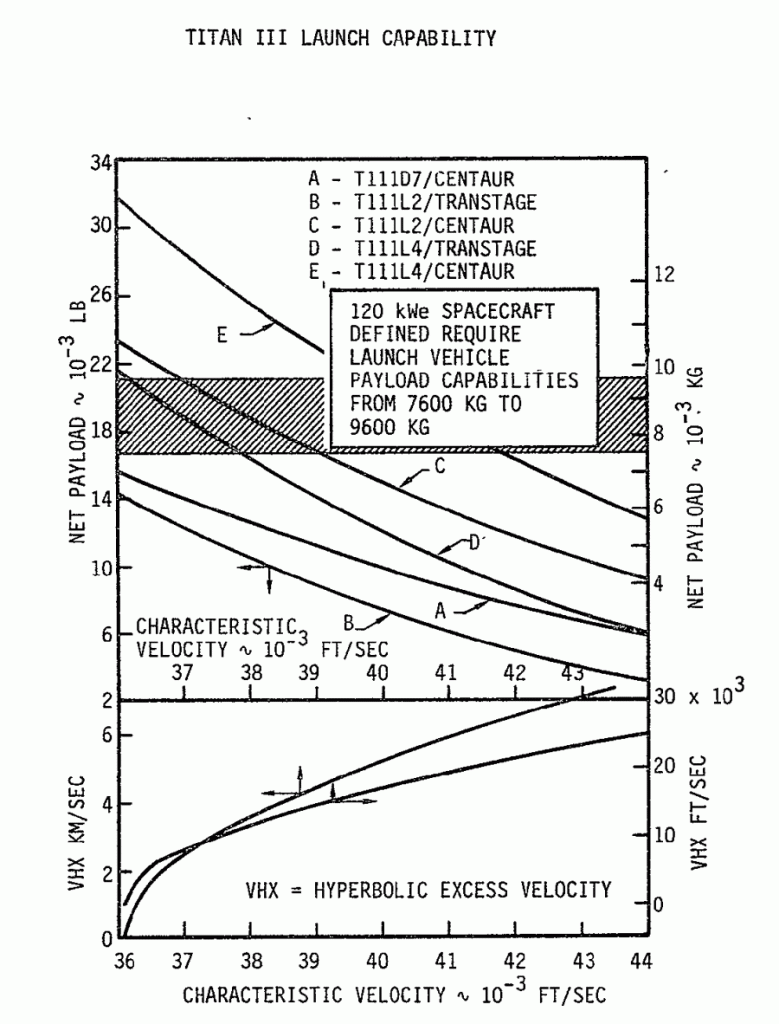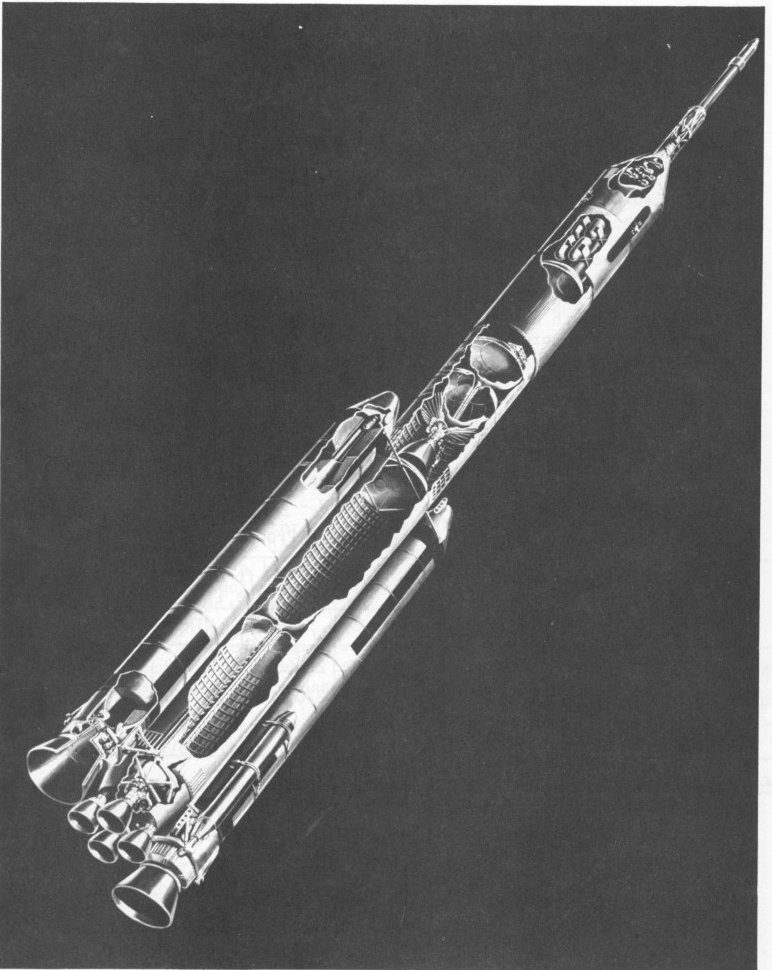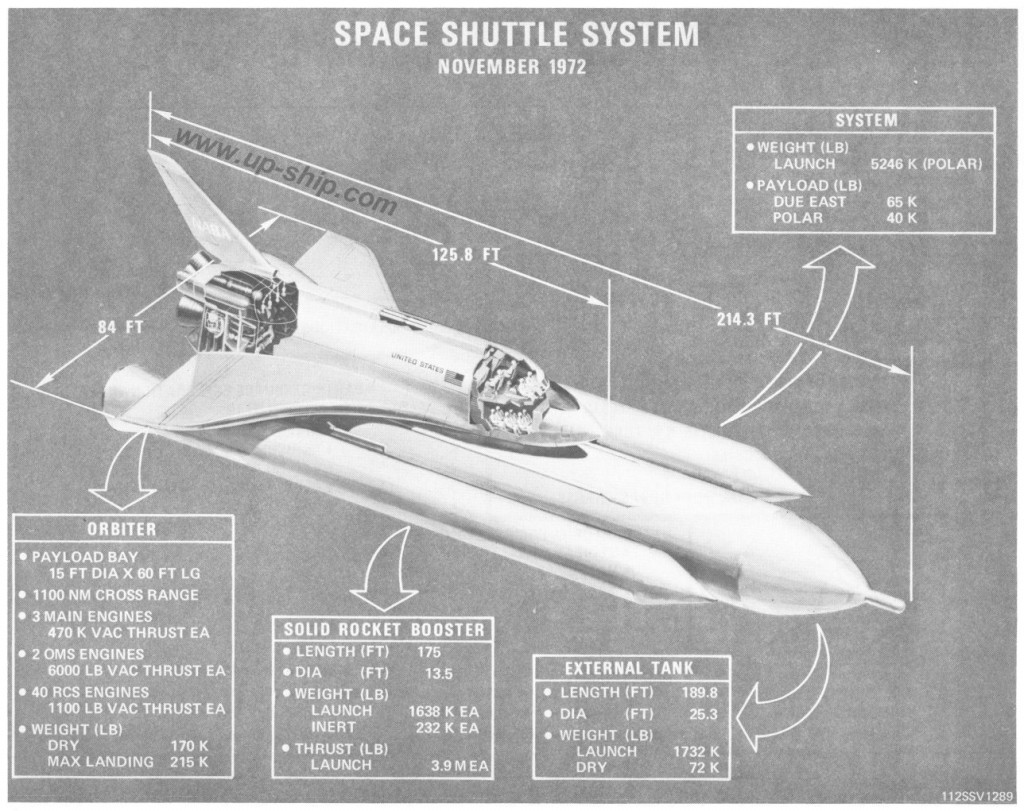An early 1971 design from McDonnell Douglas for the Space Shuttle Phase B extension program. As an alternative to solid rocket boosters, this concept used a single liquid rocket booster underneath the external tank. Several concepts were studied, including pressure fed systems. This particular design used four F-1 rocket engines from the Saturn V, in an entirely new booster. The booster would be recovered at sea, splashing down nose first; large flaps would stabilize it nose-down during descent, and solid rocket motors would provide terminal deceleration.
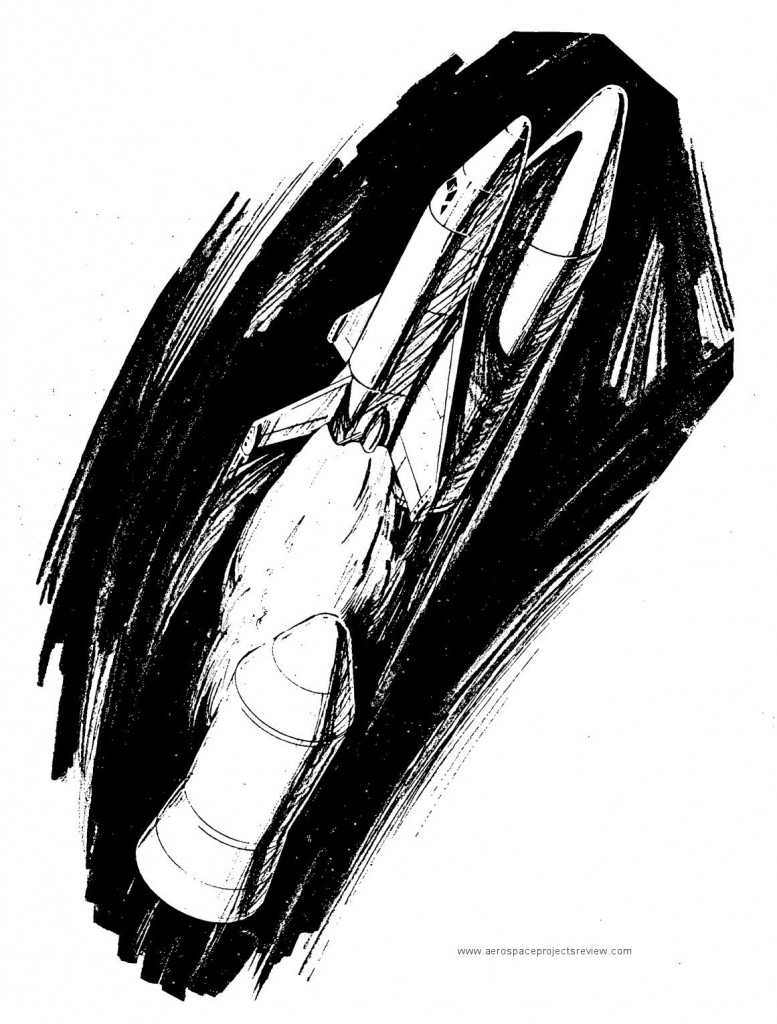
An informational poster from Rockwell International showing the configuration of the Space Shuttle dating from, I believe, February 1983. Provides geometric data as well as coloration, mission profile and subcontractor data.
You can download a 9 megabyte ZIP file with 300 DPI scans of both front and back of this poster. The 1/200 scale drawings are particularly nice. The link to the ZIP file is HERE. To access it, you will need to enter a username and password. The username: the first word in the body of the text on page 8 of APR issue V3N2. The password: the first word in the body of the text on page 24 of the same issue. Note that both are case sensitive.
At long last, Aerospace Projects Review issue V3N2 is now available.
The main article, about 90 pages worth, covers the Lockheed STAR Clipper concept.This was a one-and-a-half stage space shuttle concept. Starting in 1968 for the USAF, the concept lasted well into Phase B of the Space Shuttle program for NASA, and in altered form into the 1990’s. This article has a very large number of detailed schematics of many different forms, including the original small 1.5 Stage To Orbit design, numerous variations on that concept, fully reusable two stage versions with manned boosters, giant concepts for Solar Power Satellite logistics and miniature versions for the USAF in the 1980s.
Also included is an article covering antecedents and derivatives of the Northrop F-23 stealth fighter. Included are early designs such as the “Christmas fighter” and several “platypus” concepts, the F-23A operational fighter design, the NATF-23 concept for the US Navy with aft mounted wings and canards, the single-engined Multi Role Fighter (from the competition that led to the F-35) and perhaps most interestingly, the F/B-23 regional bomber, of eBay infamy. This article is illustrated with a mix of photos of official Northrop display models, official Northrop diagrams, all-new scale diagrams and color artwork especially commissioned for this article.
Dennis R. Jenkins provides an article on a Convair concept for converting the F-106 interceptor into a small supersonic transport. Compare this to Convair idea of converting the B-58 Hustler into an SST!
And finally, two aerospace history “nuggets,” the Vanguard Model 18 VTOL transport and a Northrop laminar flow control multipurpose long-duration aircraft.
You can see the entire issue here:
It is available in three formats. Firstly, it can be downloaded directly from me for the low, low price of $10. Second, it can be purchased as a professionally printed volume through Magcloud; third, it can be procured in both formats. To get the download, simply pay for it here through paypal.
——–
———
To get the printed version (or print + PDF version), visit my MagCloud page:
ALSO AVAILABLE: V3N2 Addendum, with 65 pages formatted for 11X17 sheets. Includes larger format (and higher rez images) along with additional artwork and diagrams that were not in issue V3N2 due to space constraints.
V3N2 Addendum download order: $5.00
———
In 1957, Darrell Romick of Goodyear produced the “Meteor Jr.” design for a three stage fully reusable manned launch vehicle, a smaller version of the “Meteor” design from 1954. The designs were straightforward, with simple but gigantic delta wings.
As with other, similar designs of the period, such as Werner von Brauns “Ferry rocket” and derivatives, the math behind the performance of the Meteor Jr. was sound. However, like those other designs, the physics underlying re-entry would have trashed the Meteor Jr. Thin sharp wings made out of steel simply cannot withstand the aerothermal heating. Additionally, the large bubble canopies would have been at best problematic.
The Air & Space Museum Udvar-Hazy facility has a Goodyear display model of the Meteor Jr. vehicle on display.
I have an article on the Boeing Space Freighter in the latest issue (July/August 2011) of “Horizons,” the newsletter of the Houston AIAA chapter. Free to download here:
The Titan IIIL series was a Martin Marietta concept (late 1960’s into early 1970’s) for a heavy lift derivative of the Titan IIIC launch vehicle. The core would be increased in diameter from 10 feet to 15, and the number of liquid propellant rocket engines increased from two to four. Additionally, the vehicle could be given two, four or six solid rocket motors (Titan IIIL2, Titan IIIL4, Titan IIIL6). The Titan IIIL6 concept was considered as a first stage booster for the Space Shuttle.
The Titan IIIL2 had enough lift capacity to launch an Apollo-derived capsule and service module, providing an alternative to the Saturn Ib for space station logistics and crew transfer.
Several images of the nearly-final Rockwell Space Shuttle.
A circa late 1972 design:
Many more images after the break…
